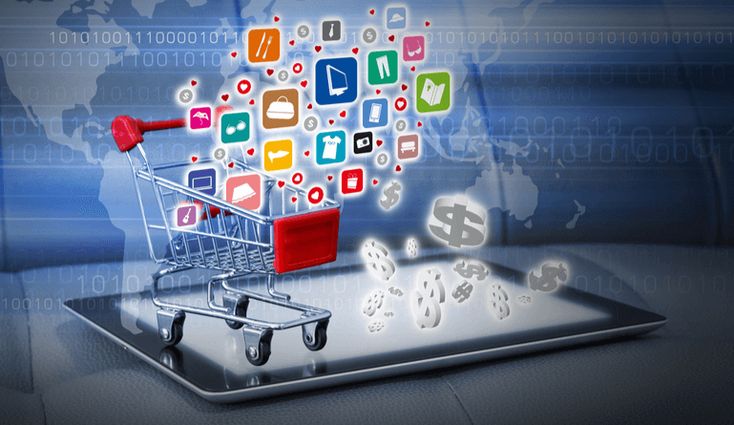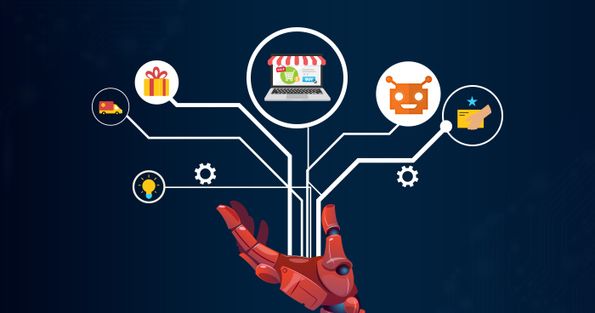In an era where online shopping has become the cornerstone of retail, businesses must harness the power of advanced technologies to stay competitive. From AI-driven personalization to seamless checkout processes, a suite of cutting-edge tools is transforming how merchants attract, engage, and retain customers. This comprehensive guide explores the most impactful solutions that streamline every facet of e-commerce operations, offering actionable insights for companies of all sizes.
1. AI-Powered Product Recommendations
Personalization lies at the heart of modern online retail. By analyzing customer behavior, purchase history, and browsing patterns, AI recommendation engines deliver tailored suggestions that boost average order value and conversion rates.
A. Behavioral Analysis
Machine learning algorithms track clicks, time on page, and cart interactions to predict items a shopper is most likely to buy.
B. Cross-Sell and Upsell
Real-time suggestions for complementary or higher-tier products encourage customers to add more to their carts.
C. Dynamic Merchandising
Merchants can automatically rotate featured products based on trending data, seasonality, or inventory levels.
Key Benefits:
A. Enhanced customer satisfaction through relevant suggestions
B. Increased revenue via personalized cross-sells
C. Reduced bounce rates as shoppers discover engaging items
2. Chatbots and Conversational Commerce
24/7 customer support and guided shopping experiences are now possible with AI-driven chatbots. These virtual assistants handle routine inquiries, process orders, and even recover abandoned carts.
A. Instant Query Resolution
FAQs, order tracking, and return policies can be managed without human intervention.
B. Guided Selling
Chatbots ask questions to understand customer needs and recommend suitable products.
C. Multilingual Support
Global brands benefit from bots that converse in multiple languages, broadening market reach.
Implementation Tips:
A. Integrate with major messaging platforms like WhatsApp, Facebook Messenger, and website widgets.
B. Continuously train the bot with new conversational data to improve accuracy.
C. Escalate complex issues seamlessly to human agents when necessary.
3. Inventory and Order Management Platforms
Efficient inventory control and order fulfillment are vital to prevent stockouts and overselling. Modern management systems centralize data across sales channels, warehouses, and suppliers.
A. Real-Time Stock Tracking
Synchronize inventory levels across online marketplaces, physical stores, and drop-shipping partners.
B. Automated Reordering
Set threshold alerts to trigger purchase orders or manufacturing requests when stock dips below a certain level.
C. Batch and Serial Number Management
Crucial for industries like electronics and pharmaceuticals, this feature ensures traceability and compliance.
Advantages:
A. Minimized carrying costs by avoiding overstock
B. Fewer lost sales due to stockouts
C. Streamlined operations with centralized dashboards
4. Marketing Automation and Email Tools
Email remains one of the highest-ROI marketing channels. Automation platforms enable segmented campaigns, drip sequences, and triggered messages based on user actions.
A. Segmentation
Group subscribers by demographics, purchase history, or engagement level for targeted messaging.
B. Abandoned Cart Sequences
Automated reminders recover up to 15–20% of abandoned carts on average.
C. Lifecycle Campaigns
Welcome series, post-purchase follow-ups, and re-engagement emails keep customers connected.
Best Practices:
A. Personalize subject lines and content with dynamic tags (e.g., {FirstName})
B. A/B test send times and email layouts for optimal open rates
C. Monitor deliverability and maintain list hygiene to avoid spam filters
5. Analytics and Data Visualization
Data-driven decision-making is indispensable. Advanced analytics platforms offer deep insights into traffic sources, customer journeys, and product performance.
A. Custom Dashboards
Combine Google Analytics, CRM, and sales data in one interface.
B. Cohort Analysis
Track customer retention and repeat purchase rates over time.
C. Predictive Analytics
Forecast sales trends and identify at-risk customers before they churn.
Implementation Strategies:
A. Define KPIs aligned with business objectives (e.g., CLV, AOV, conversion rate)
B. Schedule regular data reviews and share insights with cross-functional teams
C. Leverage visualizations like heatmaps and funnel charts for clarity
6. Augmented and Virtual Reality Experiences
Immersive technologies are closing the gap between online and in-store shopping by letting customers visualize products in their own environment.
A. Virtual Try-Ons
Apparel and eyewear brands use AR to overlay items on customer images or live camera feeds.
B. 3D Product Models
Interactive models allow zooming, rotation, and customization of color or features.
C. Virtual Showrooms
VR environments replicate brick-and-mortar experiences for remote browsing.
Outcomes:
A. Reduced return rates as shoppers gain confidence in fit and appearance
B. Higher engagement times on product pages
C. Differentiation in competitive markets
7. Payment and Checkout Optimization

Cart abandonment often spikes at checkout due to complex forms or limited payment options. Streamlined checkouts and flexible payments are essential.
A. One-Click Checkout
Save customer details securely to enable frictionless repeat purchases.
B. Multiple Payment Methods
Support credit cards, digital wallets (e.g., Apple Pay, Google Pay), BNPL (Buy Now, Pay Later), and cryptocurrencies.
C. Guest Checkout
Allow first-time shoppers to purchase without mandatory account creation.
Key Metrics:
A. Checkout completion rate
B. Average checkout time
C. Payment decline rates
8. Customer Feedback and Review Management
Authentic reviews build trust and influence purchasing decisions. Reputation management tools aggregate, display, and respond to feedback across platforms.
A. Review Collection
Automate post-purchase emails requesting ratings and comments.
B. Moderation and Display
Filter out inappropriate content and showcase top reviews prominently.
C. Sentiment Analysis
AI analyzes review text to surface common praises or pain points.
Benefits:
A. Improved SEO through fresh, user-generated content
B. Enhanced social proof leading to higher conversions
C. Actionable insights for product and service improvements
9. Omnichannel Integration Platforms
Seamless experiences across online stores, marketplaces, social media, and physical outlets are enabled by robust integration tools.
A. Unified Catalog Management
Maintain consistent product information and pricing everywhere.
B. Centralized Order Routing
Automatically assign orders to the nearest fulfillment center or store.
C. Cross-Channel Promotions
Coordinate campaigns that span email, SMS, social ads, and in-store signage.
Strategic Advantages:
A. Cohesive brand presence across touchpoints
B. Higher customer lifetime value through consistent experiences
C. Streamlined operations with a single source of truth
10. Logistics and Fulfillment Automation
Fast, reliable shipping is a cornerstone of customer satisfaction. Automation in warehousing and delivery coordination reduces errors and delays.
A. Warehouse Robotics
Automated picking and packing increase throughput and accuracy.
B. Dynamic Route Planning
Optimize delivery routes in real time based on traffic and weather.
C. Third-Party Logistics (3PL) Integrations
Connect directly with carriers for rate comparisons and label printing.
Impact:
A. Lower shipping costs via route efficiency
B. Reduced fulfillment times, boosting repeat purchases
C. Scalable operations during peak seasons
11. Security and Fraud Prevention
Protecting customer data and transaction integrity is non-negotiable. Advanced security suites detect anomalies and block fraudulent activities.
A. Machine Learning Fraud Detection
Real-time scoring of transactions based on risk factors.
B. PCI DSS Compliance Tools
Simplify adherence to payment security standards.
C. Two-Factor Authentication (2FA)
Add extra verification steps for high-risk actions like password changes.
Peace of Mind:
A. Minimized chargebacks and associated fees
B. Enhanced brand reputation through secure practices
C. Regulatory compliance across regions
12. Emerging Trends and Future Outlook

Staying ahead requires vigilance toward nascent technologies and shifting consumer behaviors.
A. Headless Commerce
Decoupling frontend and backend allows greater flexibility in delivering omnichannel experiences.
B. Voice Commerce
Integration with smart speakers and voice assistants for hands-free shopping.
C. Blockchain for Transparency
Immutable ledgers track product provenance and secure digital transactions.
Preparing for Tomorrow:
A. Pilot new tools on a small scale before full rollout
B. Invest in employee training to maximize adoption
C. Monitor KPIs closely and iterate based on performance
Conclusion
The e-commerce landscape is more dynamic than ever, with a diverse toolkit available to optimize every step of the customer journey. By strategically implementing AI-powered personalization, conversational commerce, robust inventory systems, and cutting-edge analytics, businesses can unlock unprecedented growth. As technologies like AR, blockchain, and headless architectures mature, early adopters will gain a competitive edge. The key lies in selecting solutions that align with your brand’s goals, integrating them thoughtfully, and continuously refining processes through data-driven insights. Embrace innovation today to redefine the shopping experiences of tomorrow.












